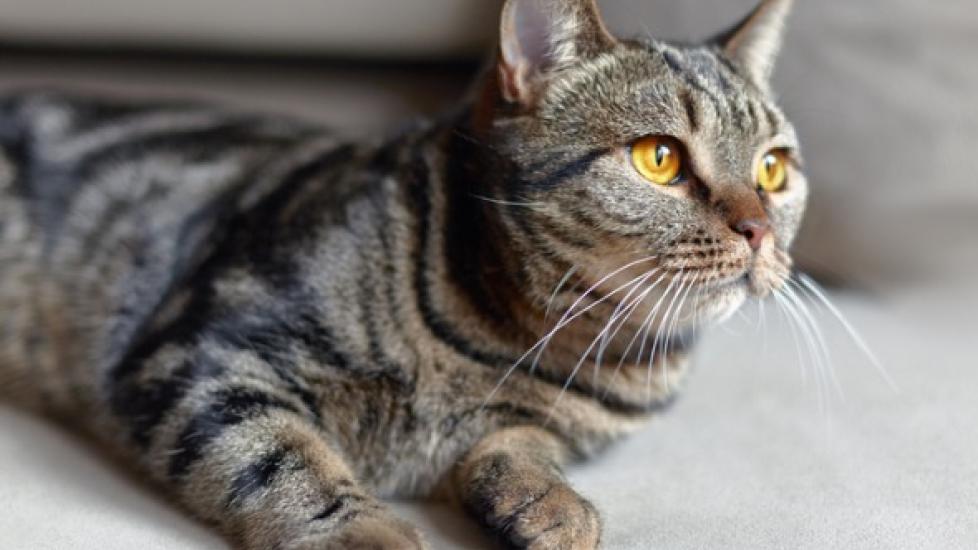Tooth Resorption in Cats
Tooth resorption in cats is a frustrating disease for both veterinarians and cat parents. It has had many names over the years, including:
-
Feline odontoclastic resorptive lesions
-
Neck lesions
-
Cat caries
-
Cervical lesions
All of these different names refer to the same dental condition in cats. Here’s everything you need to know about tooth resorption in cats.
What Is Tooth Resorption in Cats?
Tooth resorption is a condition in cats where their body starts to break down and absorb the structures of a tooth.
Tooth resorption starts when “odontoclast” cells begin to attack healthy teeth.
Any tooth can be affected by tooth resorption, but the mandibular premolars (bottom cheek teeth) are most commonly diseased.
There are two main types of tooth resorption: Type 1 and Type 2.
Feline Tooth Resorption Type 1
In Type 1 tooth resorption, areas of a diseased tooth are resorbed (broken down and absorbed) and then replaced with inflammatory granulation tissue. On dental radiographs, these areas appear to be less dense than either tooth or bone.
Feline Tooth Resorption Type 2
Teeth diseased with Type 2 tooth resorption are replaced with a bone-like material. On dental x-rays, these can look like tooth remnants in the bone.
Tooth Resorption vs. Cavities in Cats
Tooth resorption is different from cavities (aka caries) that are so common in people. Cavities are caused by bacteria that create acid. This acid breaks down the enamel and dentin of the tooth, which can kill the tooth.1 Cavities have only been noted in cats in fossils from the 13th century!2
How Common Is Tooth Resorption in Cats?
Tooth resorption was first described in cats in the 1950s. Since then, it has gotten more and more attention as the field of veterinary science evolves.
Today, tooth resorption is common in cats, with 28.5%-67% of cats diagnosed with one or more tooth resorptive lesion.3
What Causes Tooth Resorption in Cats?
While the underlying cause of tooth resorption is still unknown, researchers continue to investigate both the process and the cause of tooth resorption. Tooth resorption has not been shown to be related to bacteria in the mouth.
Researchers have investigated diets, mineral imbalances, periodontal diseases, vitamin D status, and other factors to identify the cause of feline tooth resorption. Unfortunately, a straightforward answer has not been found.
Studies have shown that cats are more likely to have tooth resorption as they age.4 They have also found that cats that are diagnosed with tooth resorption are more likely to have other teeth affected in the future.
Symptoms of Tooth Resorption
Symptoms of tooth resorption in cats can range from:
-
Drooling
-
Having difficulty chewing
-
Dropping food while chewing
-
“Chattering” the jaw while eating
-
Running away from the food bowl
Many cats with tooth resorption also show no signs of pain or change in behavior at home.
How Do Vets Diagnose Tooth Resorption?
Several different conditions can cause oral pain in cats. Your veterinarian will be able to distinguish conditions like periodontal disease, feline chronic gingivostomatitis, pyogenic granulomas, and eosinophilic disease from tooth resorption by doing a sedated oral exam and taking dental radiographs of your cat’s teeth.
Stages of Tooth Resorption in Cats
There are five stages of tooth resorption that progress from a small amount of tissue loss to severe tissue loss that extends into the tooth until only remnants of dental tissue remain.5
Veterinarians evaluate each tooth to determine the type and stage of each lesion.
Treatment
If your cat is diagnosed with a tooth resorptive lesion, your veterinarian will use dental radiographs while they are under anesthesia to make a treatment recommendation.
Without dental radiographs, a tooth resorptive lesion may just be showing the ‘tip of the iceberg,’ and it’s impossible to know how to best treat the tooth.
Treatment of Type 1 Tooth Resorption
Type 1 tooth resorptive lesions are treated with extraction of the tooth with the roots (surgical extraction).
Treatment of Type 2 Tooth Resorption
Type 2 tooth resorptive lesions can be treated with a crown amputation, which removes the diseased portion of the tooth but leaves the already resorbing roots.
Prior to extracting teeth or doing a crown amputation, your veterinarian will perform a local nerve block to reduce the amount of anesthesia your cat needs and to ensure your cat wakes up numb and comfortable.
Can You Prevent Feline Tooth Resorption?
Unfortunately, there is no way to prevent tooth resorption in cats.
Brushing your cat's teeth daily or every other day helps to decrease plaque and bacteria to slow gingivitis and periodontal disease. If your cat becomes painful or resistant to tooth brushing that they previously allowed, it may be a sign of oral pain.
Taking your cat for their yearly wellness exams, anesthetic dental exams, cleanings, and dental radiographs is the best way to prevent your cat from quietly suffering from tooth resorption.
Your veterinarian is your best partner for diagnosis and treatment of tooth resorption.
Citations:
1. The Tooth Decay Process: How to Reverse It and Avoid a Cavity | National Institute of Dental and Craniofacial Research. https://www.nidcr.nih.gov/health-info/childrens-oral-health/tooth-decay-process.
2. Berger M, Stich H, Hüster H, Roux P, Schawalder P. Feline Caries in Two Cats from a 13th Century Archeological Excavation. J Vet Dent. 2006;23(1):13-17.
3. van Wessum R, Harvey CE, Hennet P. Feline Dental Resorptive Lesions: Prevalence Patterns. Vet Clin North Am Small Anim Pract. 1992;22(6):1405-1416.
4. Reiter AM, Lyon KF, Nachreiner RF, Shofer FS. Evaluation of calciotropic hormones in cats with odontoclastic resorptive lesions. Am J Vet Res. 2005;66(8):1446-1452.
5. AVDC Nomenclature | AVDC.org. https://avdc.org/avdc-nomenclature/.
Featured Image: iStock.com/All the rights for presented photos are my own.
